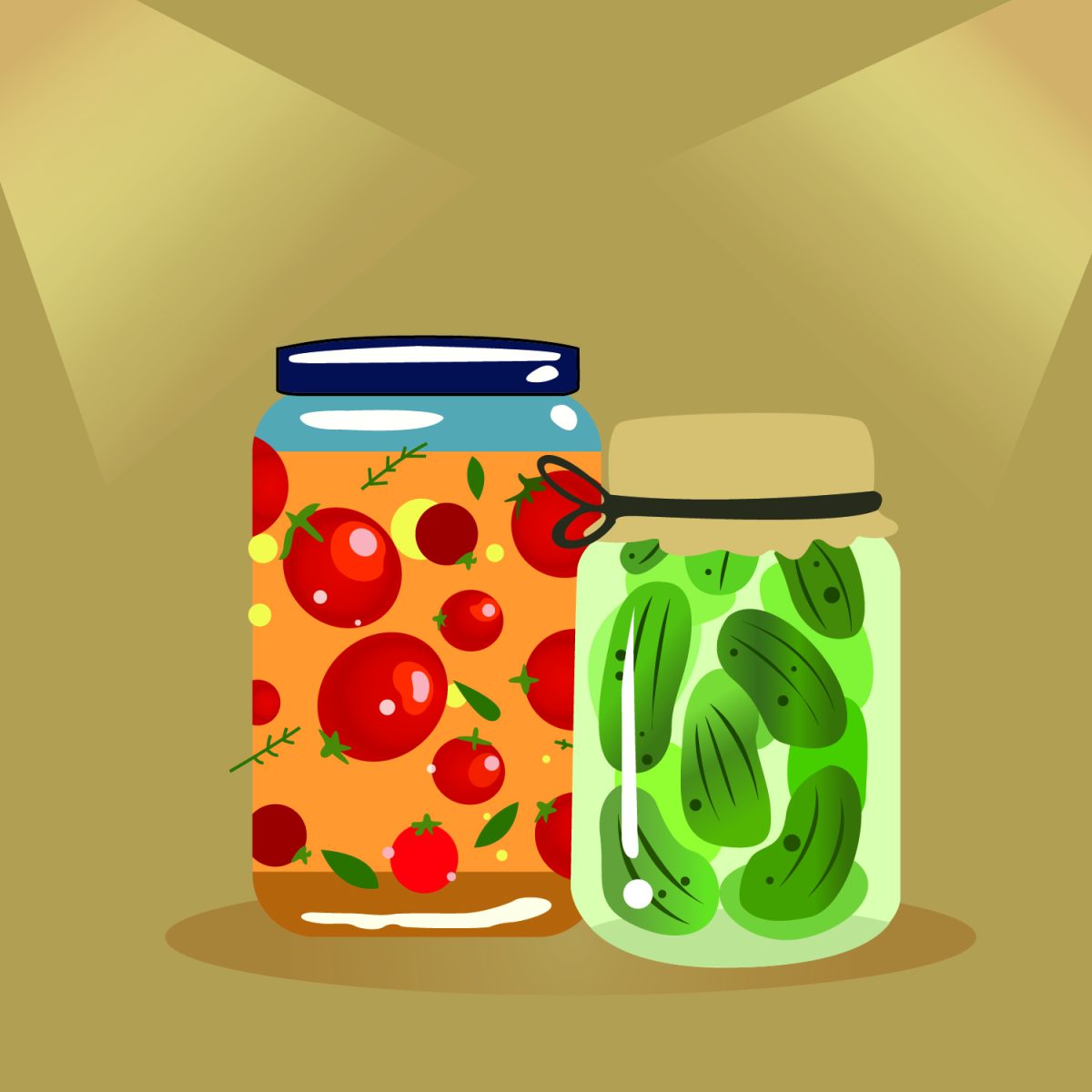In the journey of human civilization, the quest to preserve food has been as vital as the pursuit of sustenance itself. From the earliest days of freezing meats in icy climates to the revolutionary discoveries of Nicolas Appert and Louis Pasteur, our ancestors laid the groundwork for a diverse array of food preservation techniques that we employ today. As we navigate the modern landscape of bustling supermarkets and fast-paced lifestyles, the significance of food preservation has only heightened. Yet, amid the convenience and abundance, questions linger about the impact of preservatives on our health and the integrity of our food. Delving into the realms of science, history, and public opinion, this article aims to explore the world of food preservation, touching on its evolution, methods, and controversies.
The evolution of food preservation spans millennia, reflecting humanity’s ingenuity in adapting to various climates and seasons. Early civilizations devised rudimentary methods to prolong the shelf life of perishable foods, laying the groundwork for the techniques we employ today. This ingenuity persisted through the ages, with significant milestones marking the advancement of food preservation techniques. One pretty important moment occurred in the late 18th century when Nicolas Appert, a French guy, pioneered the practice of canning. According to an article by Michigan State University, Appert “discovered that the application of heat to food in sealed glass bottles preserved the food from spoilage.” This innovation not only extended the shelf life of perishable goods but also revolutionized the way societies approached food storage and distribution. Later in the 19th century, another groundbreaking discovery was later found by none other than my guy, Louis Pasteur. Pasteur’s findings on the relationship between microorganisms and food spoilage marked a turning point in our understanding of food preservation. His research underscored the critical role of bacteria and fungi in causing food spoilage, enhancing our understanding of food safety and paving the way for more targeted preservation methods. Moreover, the 19th and 20th centuries witnessed a whole bunch of innovations in food preservation technology, driven by the growing demand for convenient and long-lasting food products. The patenting of the Mason jar by John L. Mason in 1858 revolutionized home canning practices, making it accessible to the masses. Additionally, the invention of the two-piece disposable metal canning lid by Alexander H. Kerr in 1915 made the canning process more streamlined, cementing its place as a cornerstone of food preservation. These advancements not only revolutionized food preservation, but also paved the way for later discoveries and inventions.
Nowadays, the landscape of food preservation is kind of complicated, marked by a whole bunch of techniques and additives aimed at extending the shelf life of perishable goods. However, beneath all of that convenience lies a load of scientific principles governing the preservation process. For one, microorganisms, particularly bacteria and fungi, are the main contributors in the spoilage of food. Bacteria, single-celled organisms, multiply rapidly under suitable conditions, posing risks to food quality and safety. However, bacteria can also contaminate food in adverse conditions as according to Britannica, “When the conditions for bacterial cell growth are unfavorable (e.g., low or high temperatures or low moisture content), several species of bacteria can produce resistant cells called endospores.” These endospores sort of act like hibernating bacterial fungi, which begin to germinate and produce viable cells when conditions become favorable again. So, in some ways, your food is going to get contaminated either way, however, there are methods to combat this.
To mitigate microbial growth and extend the shelf life of food products, various preservation methods are used. These methods include heat application, water removal, temperature reduction, pH reduction, and control of oxygen and carbon dioxide concentrations. Chemical preservatives, such as benzoic acid, sodium benzoate, propionic acid, sorbic acid, and sodium diacetate, are utilized to suppress microbial growth in foods, with their safety regulated by the government. Additionally, enzymes which are large protein molecules acting as biological catalysts, play important roles in food preservation by accelerating or inhibiting chemical reactions. For instance, according to Britannica, “[A] chemical reaction that causes major food spoilage is nonenzymatic browning, also known as the Maillard reaction. This reaction takes place between reducing sugars and the amino group of proteins or amino acids present in foods.” Thus, the biochemical processes involved in food preservation is pretty intricate, in which careful use of the double-edged enzymatic reactions can either enhance flavor and color or contribute to spoilage if uncontrolled. However, upon considering these complexities, it is crucial to also address the potential health risks associated with certain preservatives and additives, although the path forward is not always clear.
In today’s world, the realm of food preservation can honestly feel like a labyrinth of complexity and uncertainty. As we wander through the aisles of grocery stores, pondering over labels and ingredients lists, the sheer variety of additives on the ingredients list is pretty overwhelming. We are left grappling with questions about what is safe to eat and what is best for us, and the U.S. public is pretty split on the issue too. According to the Pew Research Center, “Roughly half say the average person faces a serious health risk from [food preservatives] over their lifetime (51 percent) while the other half believes the average person is exposed to potentially threatening [preservatives] in such small amounts that there is no serious risk (48 percent).” Amidst this divide, perspectives vary. Junior Varun Wanjari’s stance reflects a practical approach, stating, “I notice a difference, for sure. I like regular (not-artificial preservative) food more. Although if it is cheaper, I do not really care about the taste as much.” Conversely, senior Nya Justice expresses a preference for natural foods, emphasizing, “I’d buy the more expensive one because I’d rather eat something that’s closer to how it is supposed to be, you know, without all those extra chemicals.” Thus, with the complexity of navigating food choices, it is essential to acknowledge the potential health risks associated with certain preservatives and additives in the midst of confusion and controversy. While these substances are intended to prolong shelf life and maintain food quality, their consumption may also pose risks to human health. For example, according to the Canadian Institute of Food Safety, synthetic preservatives like “Benzoic acid occurs naturally in some fruits and spices. Because it’s not water-soluble, sometimes sodium benzoate is used instead. Though both help limit microbial growth, benzoate contains small amounts of the carcinogen benzene.” These carcinogenic compounds pose a serious health risk as they have been demonstrated to cause cancer by disrupting normal cellular processes and promoting the growth of abnormal cells. Additionally, Prolonged exposure to these compounds, can increase the likelihood of developing cancer over time (although to be honest, it is pretty unlikely). Similarly, nitrates and nitrites, often added to processed meats for color and preservation, have been linked to an increased risk of certain cancers when consumed in excess. Moreover, sulfites, used to prevent browning and preserve the texture of various foods, can trigger severe allergic reactions to people that have asthma, myself included. Thus, informed decision-making and regulatory oversight in the realm of food preservation is kind of important regarding the risks and benefits of food additives. Additionally, just controlling the amount of processed foods consumed may lower chances of health risks as sophomore Sydney Evans puts it, “I prefer to minimize my intake of [preservatives] but they’re kind of everywhere.” Therefore, while advancements in food preservation technology offer unprecedented convenience and variety, navigating the complexities of food labels and additives requires a close eye and a cautious approach to safeguarding our health and well-being.
In conclusion, the world of food preservation is undoubtedly complex, filled with a myriad of techniques and additives aimed at keeping our food fresh and delectable. With the increase in synthetic preservatives as well as the rise in social media usage, it is not unlikely to encounter claims that food preservatives are inherently bad for health as according to freshman Rex Garner “ lot of times on media, things tend to be blown out of proportion in comparison to what they are.” Thus, navigating this terrain requires a careful balance of awareness and informed decision-making. By staying curious, conducting further research, and advocating for transparency in food labeling, we can make choices that prioritize both our enjoyment of food and our well-being.














